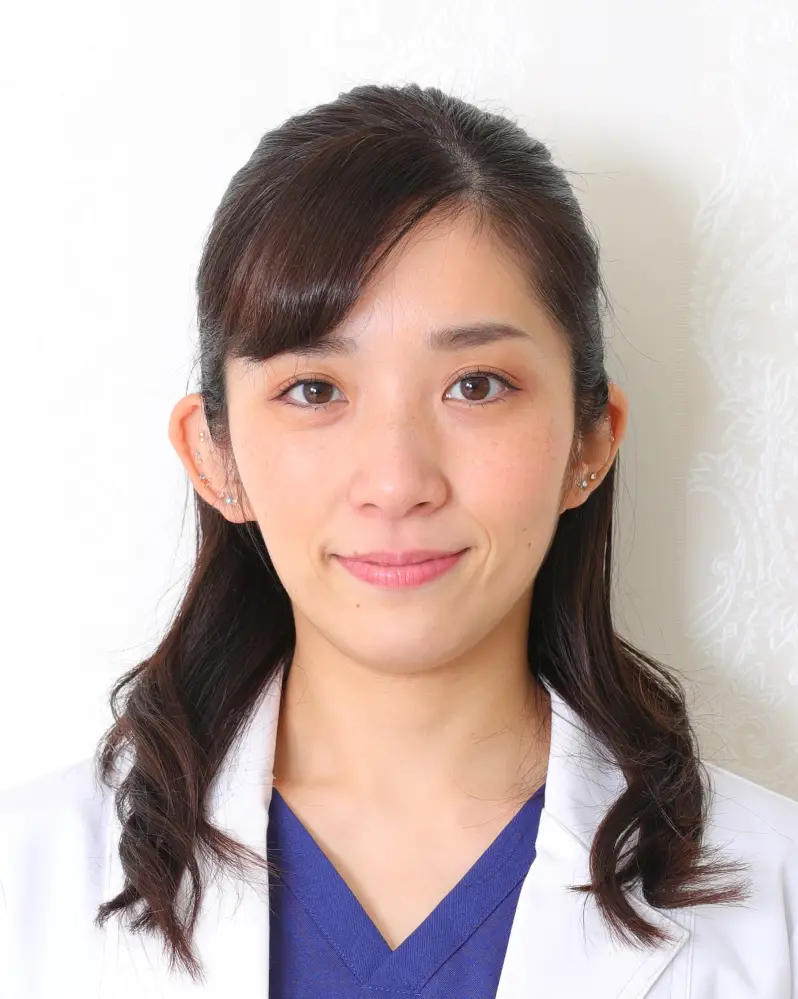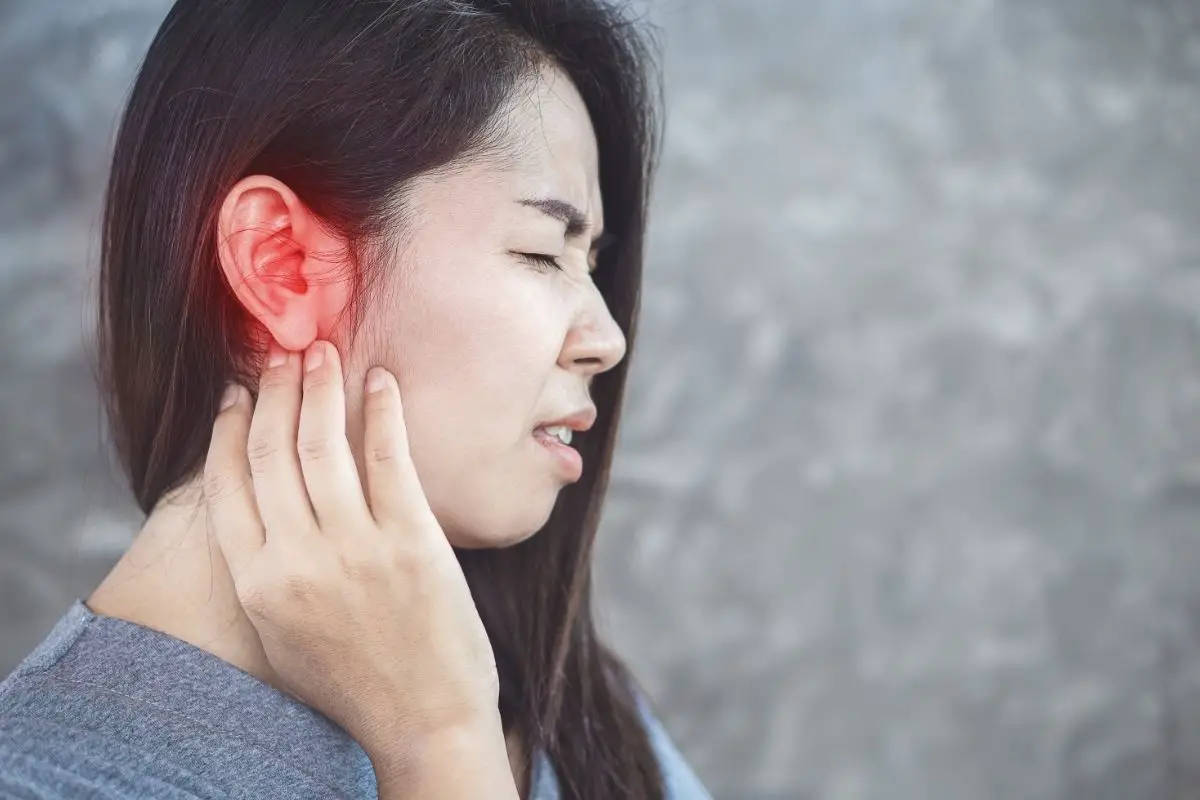Effective Acupressure Points for Relieving Ear Infections
Ear infections can be a common and painful ailment affecting both children and adults. Fortunately, acupressure offers a non-invasive, holistic approach to alleviating the discomfort and symptoms associated with ear infections. We consulted Ms. Mai Sogawa, a TCM Therapist from Japan, to identify the most effective acupressure points for this purpose. You can learn more about Ms. Mai’s expertise here.
Understanding Ear Infections
Ear infections, medically known as otitis media, occur when the middle ear becomes inflamed due to bacteria or viruses. Symptoms often include ear pain, fever, difficulty hearing, and fluid drainage from the ear. While conventional treatments include antibiotics and pain relievers, acupressure provides an alternative or complementary method to manage symptoms and promote healing.
Main Causes of Ear Infections
Ear infections are often caused by:
- Bacterial or Viral Infections: Common colds, flu, or respiratory infections can spread to the middle ear.
- Allergies: Allergic reactions can cause congestion and fluid buildup in the middle ear.
- Sinus Infections: Inflammation and mucus from sinus infections can block the Eustachian tubes.
- Adenoids: Enlarged adenoids can block the Eustachian tubes, leading to fluid buildup.
- Changes in Air Pressure: Rapid altitude changes, such as during air travel, can affect ear pressure and cause pain.
Key Acupressure Points for Ear Infections
Acupressure involves applying gentle pressure to specific points on the body to stimulate energy flow and promote healing. The following acupressure points are particularly beneficial for ear infections:
TE-21 (Ermen)
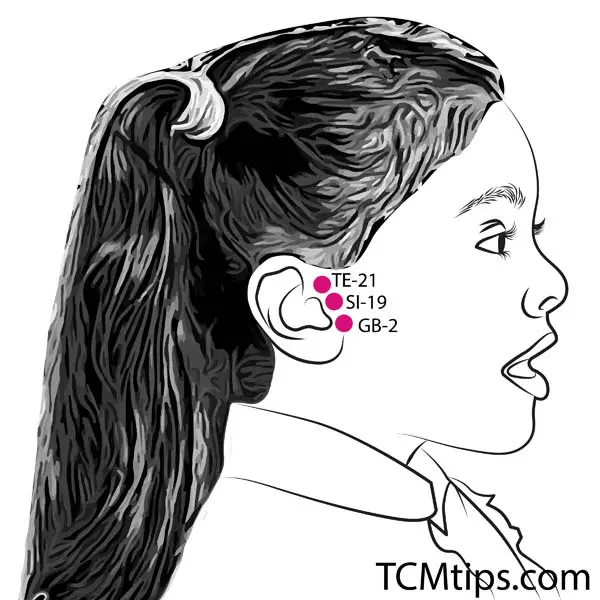
- Location: In the depression in front of the ear, level with the tragus.
- Benefits: This point helps relieve ear pain, reduce inflammation, and improve hearing. It is particularly useful for acute ear infections.
TE-17 (Yifeng)
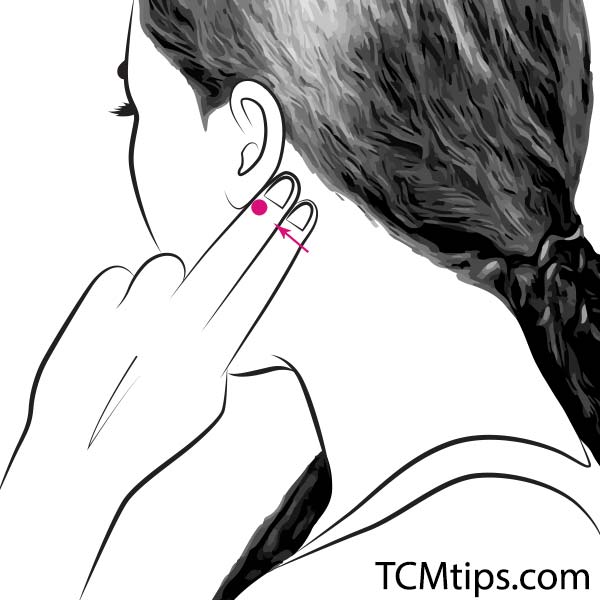
- Location: Behind the earlobe, in the depression between the jawbone and the mastoid process.
- Benefits: Yifeng is effective in treating earaches, tinnitus, and swelling. It also helps in draining trapped fluids in the middle ear.
GB-12 (Wangu)
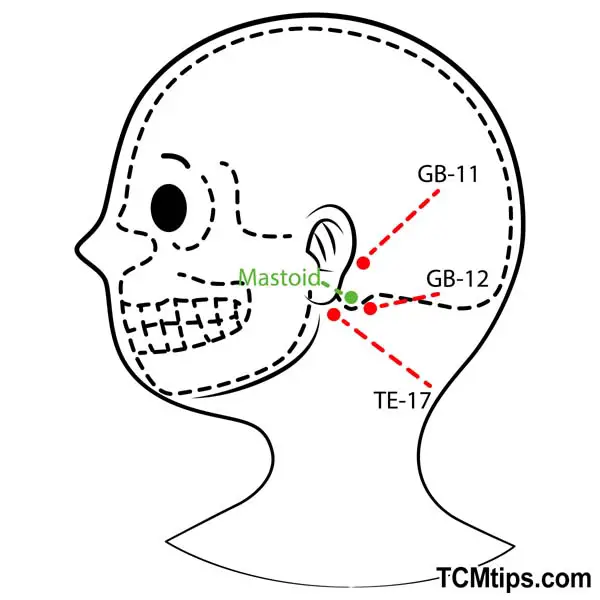
- Location: In the depression behind the ear, at the base of the skull.
- Benefits: Stimulating Wangu can alleviate pain and tension in the ear and surrounding areas, making it beneficial for chronic ear conditions.
TE-20 (Jiaosun)
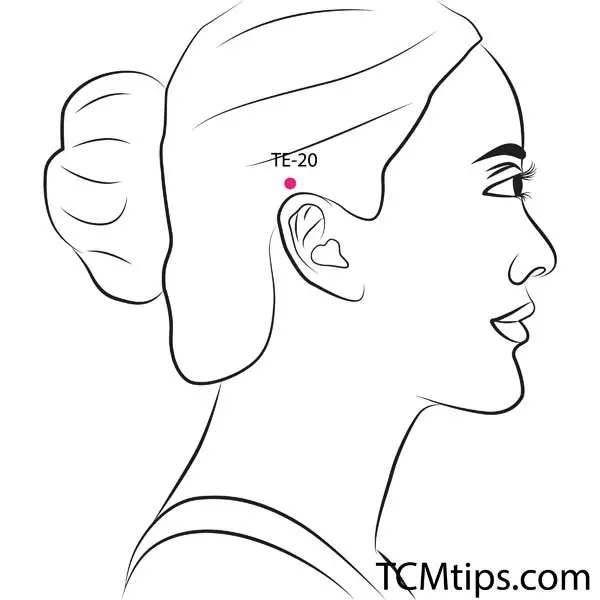
- Location: On the side of the head, directly above the ear.
- Benefits: Jiaosun is useful for ear pain and headaches associated with ear infections. It also aids in improving circulation and reducing inflammation.
SI-19 (Tinggong)
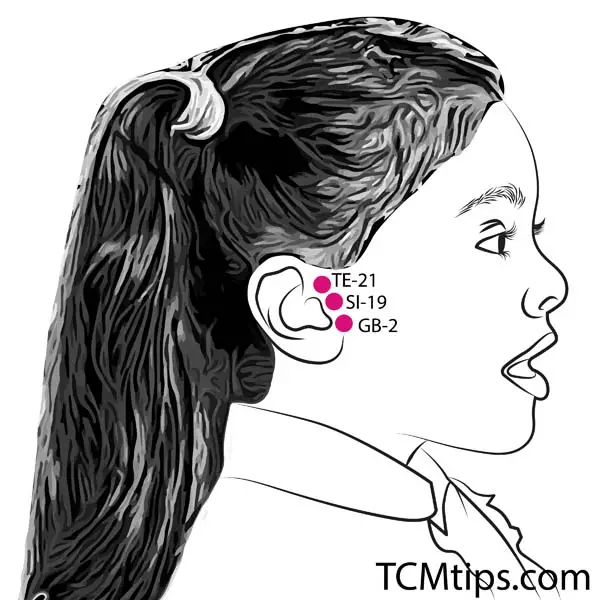
- Location: In the depression when the mouth is open, in front of the ear canal.
- Benefits: This point is excellent for treating earaches, tinnitus, and hearing loss. It helps to relieve pressure and pain in the ear.
GB-2 (Tinghui)
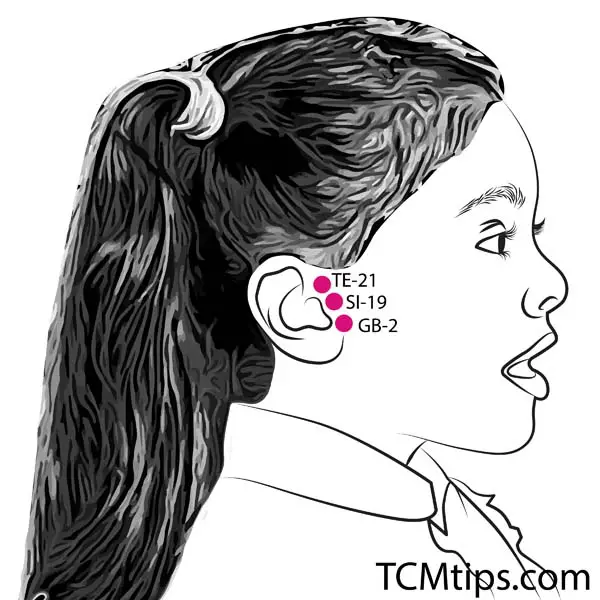
- Location: In the depression in front of the ear, at the lower edge of the tragus.
- Benefits: Tinghui is effective in relieving ear pain, tinnitus, and inflammation. It also enhances hearing and overall ear health.
How to Perform Acupressure for Ear Infections
Follow these steps to apply acupressure effectively:
- Find a Comfortable Position: Sit or lie down in a relaxed position.
- Locate the Points: Use the descriptions above to find the acupressure points.
- Apply Gentle Pressure: Using your fingers, apply gentle but firm pressure to each point.
- Massage the Points: Rotate your fingers in small circles for 1-2 minutes on each point.
- Breathe Deeply: Maintain deep and steady breathing to enhance relaxation and effectiveness.
- Repeat Daily: For best results, perform acupressure 2-3 times daily until symptoms improve.
Tips to Avoid Ear Infections
Preventing ear infections can significantly reduce discomfort and the need for treatment. Here are some tips to help avoid ear infections:
- Practice Good Hygiene: Wash hands frequently to reduce the spread of germs.
- Avoid Smoking and Secondhand Smoke: Smoke can irritate the Eustachian tubes and increase the risk of infections.
- Manage Allergies: Keep allergies under control with appropriate medications.
- Stay Hydrated: Drink plenty of fluids to keep mucus thin and reduce congestion.
- Breastfeed Infants: Breastfeeding provides antibodies that help reduce the risk of ear infections in infants.
- Keep Ears Dry: After swimming or bathing, dry the ears thoroughly to prevent moisture buildup.
- Vaccinate: Ensure vaccinations are up to date to protect against infections that can lead to ear infections.
When to See a Doctor
While acupressure can be helpful for managing ear infections, it is essential to recognize when to seek medical attention. Consult a doctor if you experience any of the following:
- Severe Pain: Intense or worsening pain in the ear.
- High Fever: A fever of 102°F (39°C) or higher.
- Hearing Loss: Significant or sudden hearing loss in one or both ears.
- Persistent Symptoms: Symptoms that do not improve within 48-72 hours.
- Fluid Drainage: Pus or blood draining from the ear.
- Balance Issues: Dizziness or loss of balance.
- Recurring Infections: Frequent ear infections that require medical intervention.
Conclusion
Acupressure is a valuable tool in managing ear infections naturally and effectively. By incorporating these techniques into your daily routine, you can reduce pain and inflammation, promote healing, and support overall ear health. Remember to consult with a healthcare professional before starting any new treatment, especially if symptoms persist.

Try our Anti-Aging Gua Sha Tool designed to bring out your skin’s natural glow.
Best Gua Sha Product- Anti-Aging: The tool is designed to target 11 specific aging signs such as wrinkles and sagging skin. By following the 7-step routine, users can improve skin firmness and reduce fine lines naturally.
- Enhances Skincare Routine: It works effectively with serums and lotions, boosting absorption and efficacy of skincare products.
- Visible Skin Improvement: Users can expect a smoother complexion, reduced puffiness, and a more youthful appearance.
 P. Sze
P. Sze 
